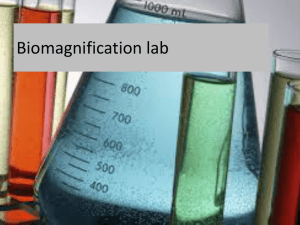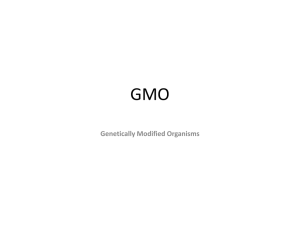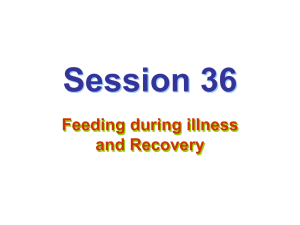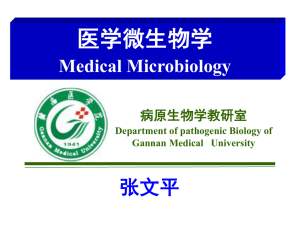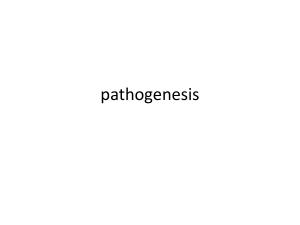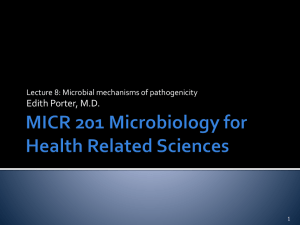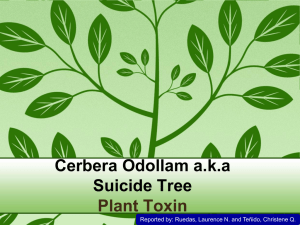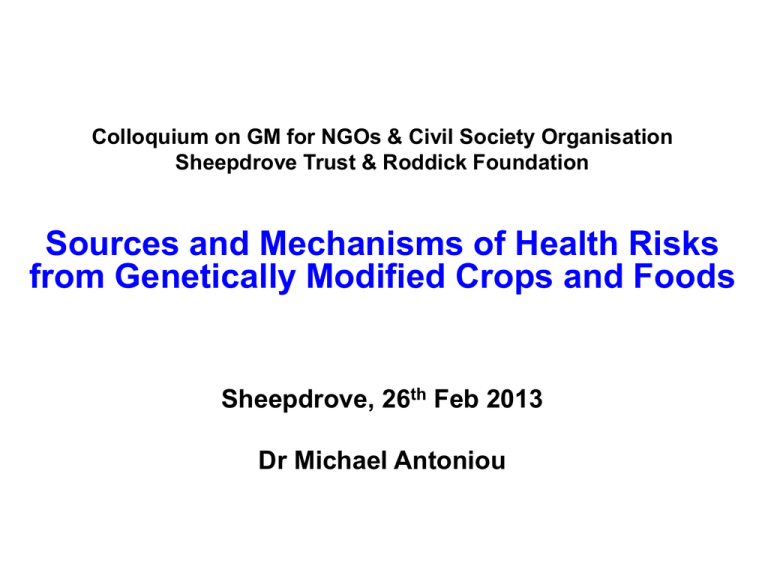
Colloquium on GM for NGOs & Civil Society Organisation
Sheepdrove Trust & Roddick Foundation
Sources and Mechanisms of Health Risks
from Genetically Modified Crops and Foods
Sheepdrove, 26th Feb 2013
Dr Michael Antoniou
Earth Open Source
www.earthopensource.org
GM Food Safety: should we be worried?
Genetically modified (GM) crops are produced through a procedure
that is radically different from conventional plant breeding:
New technology: only ~40 years old.
Does not involve natural sexual reproduction methods.
Allows transfer of one or few genes between totally unrelated
organisms, employing artificial combinations of genetic material.
Crosses species barriers to reproduction in ways that do not occur
naturally
Produces combinations of genes that have not evolved to work
together in a coordinated integrated whole
GM transformation process is inefficient: frequently uses antibiotic
resistance genes to select for transformants, which can persist in
final crop.
GM Food Safety: why should we be worried?
Generation of GM plants (and animals) involves the random
insertion or splicing of a foreign gene into the host
DNA/genome and is not a “clean” process.
GM transformation process as a whole - transgene insertion
plus tissue culture - is highly mutagenic: GM to a lesser or
greater degree, disrupts host genetic order and function.
Combined effects of GM (mutation
combinations of gene products):
effects;
novel
can disrupt genetic and protein biochemical function
lead to the generation of novel toxic effects, allergies and
altered nutritional value.
Therefore, GM crops pose new risks to food safety that need to
be evaluated for both acute and especially chronic toxic effects.
There are three sources of health risks
that can potentially arise from GM foods:
1. The introduced foreign GM gene (“transgene”):
GM gene product directly (e.g. Bt toxin)
Altered plant biochemistry caused by GM gene product
(e.g. enzymes conferring herbicide tolerance)
2. Higher exposures to herbicides used in conjunction
with the cultivation of GM crops (e.g. glyphosate)
3. Altered plant biochemistry caused by mutagenic effect
of the GM transformation process
Only four crops and two traits
dominate GM based agriculture:
Soy beans
Maize or corn
Canola or oilseed rape
Cotton
• All the GM soy and some corn varieties are engineered to be
tolerant to glyphosate based herbicide application (mostly
Roundup formulations)
• Most corn and cotton are predominantly engineered to express
versions of the insecticidal Bt toxin protein; some combine both
Bt toxin and glyphosate tolerance
• Cultivation restricted to a few nations: N & S America
Health Risk Evaluation of GM Food
Substantial Equivalence, Generally Recognised as
Safe and “Comparative Assessment”
General biochemical analysis only.
Assessment of known toxins/allergens only.
GM and non-GM parental plant are “substantially equivalent” if
they contain similar amounts of biochemical components within
limits of natural variation.
No feeding trials formally required if substantial equivalence is found.
FLAWS: Only looks at gross biochemical composition; only looks
at known components.
NOTE: BSE cow is “substantially equivalent” to a normal cow!
Animal feeding toxicity tests are not
mandatory anywhere in the world
Organisation for Economic Co-operation and
Development (OECD):
Sets guidelines for industry to conduct animal feeding studies to
evaluate toxicity of chemical products (e.g. herbicides, insecticides)
Multiple doses (at least 3 to determine dose response effects)
More than one animal
Only 90 days duration
Has not issued guidelines for GM feed/food toxicity feeding
studies
However:
Industry has adopted the chemical toxicity OECD guidelines to GM
feed/food animal feeding studies
Applications for marketing within the EU
[Note: not all OECD guidelines are followed by industry; e.g., use of at
least 3 doses, use of multiple animals species].
Heath Risk Evaluation of GM Foods
Determining the effect of the GM transformation process:
Compositional
Animal toxicity feeding studies
Need to minimise variables
Industry’s approach:
compare GM crop / food with large number of varieties unrelated to
GM variety under study grown at different times and locations
Use data in the literature (“historical norms”)
Outcome:
increases variables or “noise” in the system
masks rather than highlights effect of GM process
Only scientifically valid comparators: GM vs non-GM
parent (“isogenic”) grown at same time and location
Industry GM Crop Applications to EU
For example: MON863, MON810, NK603 corn
GM substantially equivalent to non-GM
90 day feeding studies in rats
Multiple non-isogenic non-GM comparators (note: goes against EU
guidelines)
Statistically significant differences in organ function (e.g. liver,
kidney, blood system) between GM and non-GM not significant:
Fell within large range of variation caused by using non-isogenic controls
EU regulators accepted these arguments; passed all as safe for
consumption
Controlled Animal Feeding
Studies Show Clear Signs of
Toxicity linked with GM crops
Revealed by GM vs isogenic
non-GM comparison
Feeding studies conducted by industry
Rats fed commercialised insecticide-producing MON863 Bt corn:
Grew more slowly
Sex differences
Showed higher levels of certain fats (triglycerides) in their blood
Problems with liver and kidney function (Séralini et al., 2007).
Note: * & **
indicate
statistical
significance
Feeding studies conducted by industry
Rats fed commercialised GM Bt corn varieties MON863 and
MON810 and Roundup tolerant NK603: signs of toxic effects on
liver and kidneys. (de Vendomois et al., 2009).
Differences in NK603 fed rats and
control animals fed isogenic non-GM
maize.
Note: * & ** indicate statistical
significance
Heath Risk Evaluation of GM
Crops
Industry position and accepted by regulators:
Accepts statistically significant differences between
GM and non-GM feeding groups
But claims not biologically significant!
Feeding studies conducted by academics:
commercialised crops
Rats fed GM Bt corn over three generations: areas of necrosis to liver and
kidneys and alterations in blood biochemistry (Kilic & Akay, 2008).
Old and young mice fed GM Bt corn MON810: marked disturbance in immune
system cells and in biochemical (cytokine) activity (Finamore et al., 2008).
Pigs fed GM Bt corn variety MON810 for 31 days: differences in immune cell
type numbers (e.g. CD4+ T cells, B cells, macrophages) and biochemistry
(cytokine levels; e.g. IL-12, IFNg, IL-6, IL-4, IL-8) (Walsh et al., 2011).
Ewes and their lambs fed GM Bt corn variety Bt176 over three generations:
hyperplasia of ruminal epithelial basal cells in ewes and a disturbed gene
functioning of liver and pancreas in lambs (Trabalza-Marinucci et al., 2008).
Feeding studies conducted by academics:
commercialised crops
Rabbits fed GM soy: enzyme function disturbances in kidney and heart (Tudisco et
al., 2006).
Mice fed GM soy: disturbed liver, pancreas and testes function; abnormally formed
cell nuclei and nucleoli in liver cells, indicating increased metabolism and potentially
altered patterns of gene expression (Malatesta et al., 2002; Malatesta et al., 2003;
Vecchio et al., 2004).
Mice fed GM soy over their lifetime (24 months): more acute signs of ageing in the
liver (Malatesta et al., 2008); significant changes in the expression of 49 proteins; 39
proteins more expressed in GM-fed mice, 10 proteins decreased. Significant decrease in
senescence markers (e.g. regucalcin, HSPs); lower metabolism. Structure of liver cell nuclei
suggest marked lowering of gene function:
GM
Non-GM
Feeding studies conducted by academics:
non-commercialised crops
Mitogenic effect on gut mucosa of rats fed GM potatoes containing snowdrop
GNA insecticide protein (Ewen SWB and Pusztai A, Lancet, 354, 1353-1354, 1999):
GM
Non-GM
Rat Colon
Rats fed GM Bt rice: significant differences in gut bacterial populations and organ
weights (adrenals, testis, uterus) (Schrøder et al., 2007).
“GM peas cause surprise allergic reaction”; unexpected post-translational
modifications on bean a-amylase inhibitor in peas caused marked immune
response and allergic type reactions in mice (Prescott VE et al. J Agri Food
Chem., 53: 9023-9030, 2005).
Industry and academic led animal feeding studies
show:
Commercialised GM soy and corn show consistent signs of toxic
effects in liver and kidney structure and function as well as
some immune system disturbances.
Such effects may be markers of the onset of chronic disease,
requiring long-term rather than these reported short- and
medium-term studies, to assess this more thoroughly.
Unfortunately, such long-term feeding trials on GM foods are
neither required nor requested by regulators anywhere in the
world.
What could be causing these signs of
toxicity?
1. The introduced foreign GM gene (“transgene”):
GM gene product directly (e.g. Bt toxin)
Altered plant biochemistry caused by GM gene product
(e.g. enzymes conferring herbicide tolerance)
2. Higher exposures to herbicides used in conjunction
with the cultivation of GM crops (e.g. glyphosate
formulations)
3. Altered plant biochemistry caused by mutagenic effect
of the GM transformation process
Bt toxin
Crystalline protein complex (“Cry protein”)
Occurs naturally in the common soil bacterium Bacillus thuringiensis
Some types of Bt toxins are effective insecticides
Used as agricultural spray
Bt toxin in its native crystalline form is inactive as an insecticide;
converted to insecticide active form in the digestive tract of certain
insects
Bt toxin activation procedure: highly selective insecticide
Activated Bt toxin: inserts into and causes lesions in the insect’s gut
epithelium; death either through a disrupted digestion or systemic
bacterial infection
Native Bt toxin sprays vs. Bt toxin
engineered into GM crops
GM Bt toxins: truncated active form
Bt toxin present throughout GM crop
GM Bt toxin approximately only 45% identical to the native form
GM Bt toxin in crops significantly different from that used as an
agricultural spray
Insect target specificity is compromised (e.g. see Schmidt et al., 2009)
Poses new health risks that need evaluating
Bt toxin insecticides in GM Crops:
artificial and novel, coming from modified genes of a soil
bacteria, a reservoir of more than 100 Bt toxin insecticides
Ex. 44% difference in GM Bt176 maize
Why is Bt toxin a health concern?
Bt toxin:
Proven allergen and potent adjuvant in mammals (rats, sheep) even at
low levels of exposure (Vázquez et al., 1999; Vázquez-Padrón et al.,
1999 & 2000; Kroghsbo et al., 2008; Adel-Patient et al., 2011; TrabalzaMarinucci et al., 2008).
Possesses properties, which with sufficient exposure could lead to
allergic reactions caused directly by itself or against other ingested
foodstuffs.
Immunogenic properties may account for the disturbing effects on
immune system function observed in animal feeding studies (Finamore
et al., 2008; Walsh et al., 2011).
Bt toxin type Cry1Ab:
Present in commercialised GM crops (e.g. MON810 corn)
Binds to human cells in tissue culture
Disturbances in cell energy production and exterior (plasma)
membrane systems leading to cell death, albeit at relatively high levels
(Mesnage et al., 2012).
Human incidences of Bt toxin exposure
GM Cry9C Bt toxin “Starlink” corn, USA:
Intended only for animal feed; accidental entry into human food
Many recorded instances of allergic type reactions following consumption
Bt cotton, India:
Severe skin rashes in Bt cotton field workers; some cases needed hospitalisation
(Gupta et al., 2005)
Farm animals feeding on the Bt cotton stubble suffering severe illness and death
(Warangal District, Andhra Pradesh, 2006)
Bt toxin in pregnant and non-pregnant women, Canada:
Bt toxin found in the circulation of non-pregnant & pregnant women including
blood supply to foetus
Source and integrity of the Bt toxin-unknown
Study shows that Bt toxin can survive digestion and enter the circulation.
(Aris and Leblanc, 2011)
Consumption of Bt toxin GM food runs the risk of chronic systemic exposure.
Animal feeding studies suggest this may contribute to adverse health effects
especially with respect to liver, kidney and immune system function.
Therefore, further investigation is needed before Bt crops can be claimed to
be safe for humans.
Conclusions
Increasing evidence shows the disruptive effect of the GM: need for in-depth
molecular profiling to identify alterations in composition.
Clear signs of toxicity: (especially to liver & kidney function) in controlled animal
feeding studies even of a short-term nature.
Cause of signs of toxicity: do they result from GM transgene function (Bt toxin,
herbicide tolerance), herbicide residues, the mutagenic effect of the GM
transformation process or combinations of these?
Allergenicity: needs to be evaluated with human volunteers; no animal model
systems available for this type of clinical investigation.
Toxicity needs to be confirmed or refuted in life-long animal feeding
studies.
Based on available evidence and inadequacy of the tests requested
by regulators, at present no GM crop and food can be categorically
stated as safe to consume, especially on a long-term, life-long
basis.
Background to Study
Follow up to industry 90 day feeding trial
Same experimental design: OECD, same strain &
numbers of rats analysed
GLP conditions
Longer (2 years)
More parameters measured (e.g. endocrine hormone
levels)
Three doses of GMO & Roundup
More extensive test groups; GMO, GMO+R, R
NOTE: toxicity NOT carcinogenicity study
Summary of Study Findings
Escalation of signs of liver and kidney toxicity in
Monsanto 90-day feeding trial leading liver / kidney
failure and premature death especially in males
Unexpected increase in tumor incidence, especially
via Roundup in females (mammary tumors)
Unexpected low dose toxicity from Roundup (10,000
times lower than that permitted in drinking water in
USA)
Females: died prematurely from mammary tumors
(& pituitary dysfunction).
Note: severe adverse effects started at 4 months and
peaked during second year of life.
Criticisms from GM Crop Advocates
Wrong strain of rat: already cancer prone
Too few rats analysed
Wrong statistical methods of analysis
Not in accordance with OECD guidelines
But, Seralini study based on Monsanto study only longer
and more comprehensive in analysis; either both are
wrong or both are right as far as each goes!
Rebuttal of Criticisms
For detailed, evidence-based rebuttal of criticisms:
see gmoseralini.org
Conclusions
Re-evaluate assessment of NK603 GM corn:
Conduct carcinogenicity study with larger number of
animals
Need to conduct life long (2-year) feeding studies for
ALL GMO foods
Need to conduct life long (2 year) toxicity studies
with complete pesticide formulations and not just
active principle
The GM Transformation Process
(A) PDS/1000 biolistic device used
for microprojectile bombardment.
(B) Suspension cells of tall fescue
plated on filter paper before
microprojectile bombardment.
(C) Hygromycin resistant calli
obtained after selection.
(D), (E) Transgenic plantlets
regenerated from the hygromycin
resistant calli.
(F) Transgenic tall fescue plants
growing in the greenhouse.
Increased Rates of Mortality in GMO &
Roundup Fed Groups
Increase Tumor Incidence in GMO & Roundup
Fed Groups
Most Frequent Anatomical Pathologies
Increased Incidence of mammary Tumors in
Females
Kidney Failure in Females
Kidney Leakage & Hormone Imbalance in
Females
Animals
33% GMO (solid line) vs Controls (dotted line): serum or urine measurements; at 15 month

